
A Modern Zombie Adventure...
In Fifth Edition Rules!
Table of Contents
- Backgrounds
Survivor Character Traits and Features
3. Surviving in a World of the Dead
Bases of Operation
Scavenging and Travel
Equipment
4. Special Locations and Side Quests
Art Credit
Art Credit

PART 1
Rules in Brief

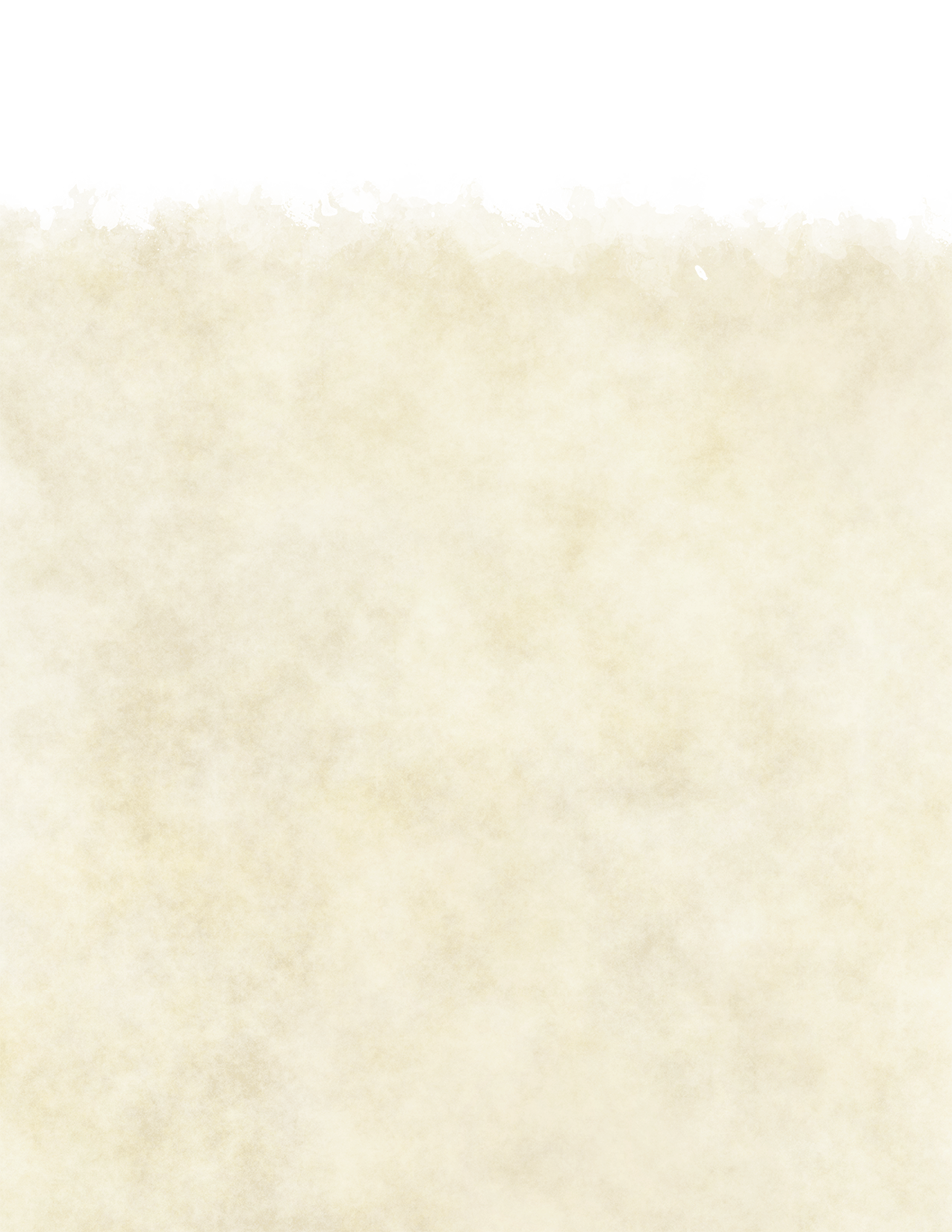
In an effort to provide a complete game, DMDave constructed the rules for ZACs 5E as concise as possible. In general, ZACs 5e uses the same rules as Dungeons & Dragons. If you have questions about how a ZACs 5e rule works, you can usually find the answer there. You’ll want, at the very least, a copy of the Players Handbook and Dungeon Master’s Guide to play. While the Monster Manual is useful, however, it’s not necessary, as many of the challenges that you will face will be included in this ruleset.
The following changes are made to the Fifth Edition ruleset for ZACS 5e:
Character Creation
ZACS 5e doesn’t use races and classes the same way that Dungeons & Dragons Fifth Edition does. Instead, all characters are human and they all fall under a single class: Survivor. Furthermore, backgrounds act as both the “race” and “origin” for a character, offering up roleplaying notes and traits. Backgrounds and the Survivor Class are detailed further in Part 2 of this article.
Money
Thanks to the collapse of civilization, most currency is nearly useless. Instead, items and equipment are traded, with food being the common “gold standard.”
Vehicles
Vehicles are much more common in ZACS 5e, therefore there are special rules governing vehicles. Basic automobiles (those having two axles) do not require proficiency to operate. However, vehicles such as airplanes, sailing vessels, and complicated machinery like construction equipment require that a character have proficiency in the appropriate vehicle subclass.
Most vehicles require fuel of some sort to operate. If a vehicle does not have the proper fuel, it cannot function. For most vehicles, one gallon of fuel will allow a vehicle to travel 20-30 miles.
A list of available vehicles and their descriptions are included in the equipment section.
Multiclassing
Since there is only one real “class”, characters cannot multiclass. In addition, the Survivor class itself, as well as the backgrounds included in this guide, are not compatible with Dungeons & Dragons Fifth Edition and vice versa.
Feats
Because many of the background and survivor character features are similar to the feats listed in the Player’s Handbook, characters may not take feats in place of Ability Score Improvements.
Skills
Some of the skills in Dungeons & Dragons Fifth Edition are obsolete in ZACS 5e. Make the following changes to the available skills:
- Remove Intelligence (Arcana) and Wisdom (Animal Handling)
- Add in Intelligence (Science)
Downtime Activities
Many of the downtime activities covered in the Player’s Handbook are still available, although you will need to remove “Practicing a Profession.” In addition, the requirements for money are removed. Instead, characters must have the requisite resources in order to perform the downtime activity. Examples are included below:
- Crafting. You can use the appropriate artisan’s tools and proficiencies to improve your base of operations. You must have the raw materials in order to do so. For example, if you wish to improve a location’s defenses, you’ll need lumber or bricks. If you want to garden, you’ll need seeds, fertilizers, and tools. The GM decides what materials are needed.
- Researching. You will need access to the proper research materials such as textbooks and laboratory equipment.
- Training. In addition to training to learn a new language or a new tool, you can gain a weapon proficiency of your choice. It still takes 250 days to become proficient in a weapon. Magic Despite the dead mysteriously coming to life, there is no magic and therefore, no spellcasting or magic items in ZACS 5e.
Creating Encounters
ZACS 5e is a dangerous world and survivors are not nearly as tough as traditional Fifth Edition adventurers. Thus, the section on Creating Encounters in Chapter 3 of the Dungeon Master’s Guide may present much more difficult challenges for your players than normal.
Special Rules Options
ZACS 5e is designed to be a much grittier, more realistic roleplaying setting. As such, it uses a number of optional rules from the Dungeon Master’s Guide in order to drive home the horrific and challenging feel of the game. Of course, you are free to use all, some, or none of these rules options. Ultimately, it’s your game.
Medicine Kit (Healer’s Kit) Dependency
You can’t spend any Hit Dice after finishing a short rest until someone expends one use of a medicine kit to bandage and treat your wounds.
Slow Natural Healing
Characters don’t regain hit points at the end of a long rest. Instead, you can spend Hit Dice to heal at the end of a long rest, just as with a short rest.
Gritty Realism
Short rests are 8 hours long and long rests are 7 days long.
Horror Checks
When you are faced with a horrific situation–such as being surrounded by a swarm of zombies or watching a friend eaten alive–they must make a Horror check. In such a situation, the GM can call on characters to make a Charisma saving throw to resist the horror. The GM sets the DC based on the magnitude of the horrific circumstances. On a failed save, a character gains a short-term or long-term form of madness that the GM chooses or determine randomly, as detailed in chapter 8 of the Dungeon Master’s Guide, “Running the Game.”
Injuries
Damage leaves lingering effects in ZACS 5e. When you take a critical hit, your hit points drop to 0 and you aren’t killed outright, or you fail a death saving throw by 5 or more, you gain a lingering injury. Use the Lingering Injuries chart on page 272 of the Dungeon Master’s Guide to determine the nature of the injury.
Infection
Whenever you suffer a lingering injury other than the festering wound result, you must make a DC 15 Constitution saving throw. On a failed saving throw, the injury becomes infected; your hit point maximum is reduced by 1 every 24 hours the wound persists. If your hit point maximum drops to 0, you die. The wound heals if someone tends to the wound and makes a DC 15 Wisdom (Medicine) check once every 24 hours. After ten successes, the wound heals. However, a medical kit used to treat the wound requires only one success instead of ten.
Massive Damage
When a creature takes damage from a single source equal to or greater than half its hit point maximum, it must succeed on a DC 15 Constitution saving throw or suffer a random effect determined by a roll on the System Shock table from page 273 of the Dungeon Master’s Guide.
Undeath
When a human dies in ZACS 5e, it returns as a zombie in 1d4 hours unless its brain is destroyed.
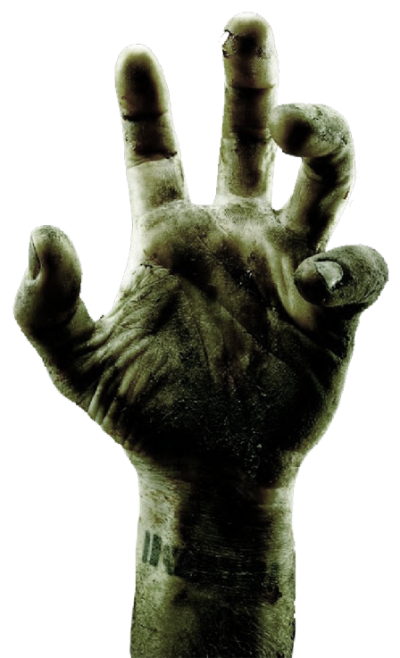
PART 2
Survivor Characters


ZACS 5e doesn’t use races and classes the same way that Dungeons & Dragons Fifth Edition does. Instead, all characters are human and they all fall under a single class: Survivor.
How to Create a Survivor Character
The method for creating a survivor character in ZACS 5e is similar to the way it’s done for adventurers in Dungeons & Dragons Fifth Edition but with a few changes.
-
Choose a Background. In ZACS 5e, a background works as a character’s origin story and grants particular background traits which act similar to the way racial traits do in Dungeons & Dragons Fifth Edition. Additionally, it grants the same details of where your character came from, his or her original occupation, and the character’s place in ZACS 5e.
-
Survivor Class. All characters in ZACS 5e take the survivor class. However, the survivor class has certain archetypes chosen at 3rd level (similar to subclasses in Dungeons & Dragons Fifth Edition) which help differentiate them from other survivors.
-
Determine Your Ability Scores. Like Dungeons & Dragons Fifth Edition, ZACS 5e uses Strength, Dexterity, Constitution, Intelligence, Wisdom, and Charisma as the main ability scores. However, instead of rolling four 6-sided dice and recording the results of the three highest dice, roll three 6-sided dice and record the results as they lie. Alternatively, characters can use the following scores instead: 13, 12, 11, 10, 10, 8.
-
Describe Your Character. Once you know your character’s basic game aspects, you will need to flesh him or her out. Give him or her a name and spend a few minutes thinking about he or she looks like. Choose your character’s alignment and ideals. Then, identify the character’s bonds and flaws.
- Choose Equipment. Your survivor’s background determines your character’s starting equipment, including weapons and other survival gear. Currency is virtually useless in ZACS 5e, but if you prefer, you can have your survivor start with a number of “trade points” to spend based on your background. Equipment lists are included in Part 3.
Survivor Backgrounds
Because there is only one “race” in ZACS 5e (humans), selecting a race is redundant. Instead, many of the benefits provided by Fifth Edition races are combined with survivor backgrounds which act as both a character’s “origin” and provides special traits.
Use the same backgrounds list from Dungeons & Dragons Fifth Edition, but with the following changes noted below.
Acolyte
Characters who have spent their life in the service of their religion or act as spiritual guides to others are acolytes. Acolytes may be priests, pastors, or even guidance counselors.
-
Ability Score Increase. Your Wisdom score increases by 1.
-
Skill Proficiencies. You gain proficiency in Wisdom (Insight) and Intelligence (Religion).
-
Focused. You gain proficiency in Wisdom saving throws.
-
Equipment. A holy symbol, a prayer book, and a set of common clothes. In addition, you have 15 trade points that you can spend purchasing equipment of your choice. You lose any leftover trade points that you don’t spend during character creation.
Athlete
Athletes have undergone extensive physical training. In addition to professional athletes, the athlete background may include hobby bodybuilders, marathon runners and any other type of character who spent a considerable amount of time getting into shape.
-
Ability Score Increase. Your Strength or Dexterity score (your choice) increases by 1, and your Constitution score increases by 1.
-
Skill Proficiencies. You gain proficiency in Strength (Athletics) and Dexterity (Acrobatics).
-
Physical Training. When you are prone, standing up uses only 5 feet of your movement. Plus you can make a running long jump or a running high jump after moving only 5 feet on foot, rather than 10 feet.
-
Equipment. Common clothes. In addition, you have 15 trade points that you can spend purchasing equipment of your choice. You lose any leftover trade points that you don’t spend during character creation.
Charlatan
Charlatans have a way with people. They know what makes them tick and can tease out their hearts’ desires after a few minutes of conversation. Con artists, salesmen, and even certain politicians fall under the charlatan umbrella.
-
Ability Score Increase. Your Charisma score increases by 1.
-
Smooth Talker. You gain proficiency in Charisma (Deception) and Charisma (Persuasion). Choose one of these skills. Your proficiency bonus is doubled for any ability check you make that uses the chosen skill.
-
Equipment. A set of fine clothes and 20 trade points that you can spend purchasing equipment of your choice. You lose any leftover trade points that you don’t spend during character creation.

Criminal
Criminals have a history of breaking the law. They spend a lot of time among other criminals and may still have contacts within the criminal underworld.
-
Skill Proficiencies. You gain proficiency in Charisma (Deception) and Dexterity (Stealth).
-
Alert. You gain a +5 bonus to initiative and you can’t be surprised while you are conscious. In addition, other creatures don’t gain advantage on attack rolls against you as a result of being unseen by you.
-
Equipment. A crowbar, a set of dark common clothes including a hood, and an automatic pistol with 15 bullets. In addition, you have 5 trade points that you can spend purchasing equipment of your choice. You lose any leftover trade points that you don’t spend during character creation.
Entertainer
Entertainers thrive in front of an audience. They know how to entrance them, entertain them, and even inspire them. Actors, musicians, and public speakers make excellent entertainers.
-
Ability Score Increase. Your Charisma score increases by 2.
-
Skill Proficiencies. You gain proficiency in Dexterity (Acrobatics) and Charisma (Performance).
-
Tool Proficiency. You are proficient in one type of musical instrument of your choice.
-
Equipment. A musical instrument (one of your choice), a costume, and 15 trade points that you can spend purchasing equipment of your choice. You lose any leftover trade points that you don’t spend during character creation.
Healer
Healers are able physicians. They can mend wounds quickly. Doctors and nurses are healers.
-
Ability Score Increase. Your Intelligence score increases by 1 and your Wisdom score increases by 1.
-
Skill Proficiencies. You gain proficiency in Intelligence (Investigation) and Wisdom (Medicine).
-
Medicine. When you use a medicine kit to stabilize a dying creature, that creature also regains 1 hit point. Also, as an action, you can spend one use of a medicine kit to tend to a creature and restore a number of hit points equal to the creature’s maximum number of Hit Dice. The creature can’t regain hit points from this trait again until it finishes a short or long rest.
-
Equipment. A medicine kit and a set of common clothes. In addition, you have 15 trade points that you can spend purchasing equipment of your choice. You lose any trade points that you don’t spend during character creation.
Laborer (Replaces Guild Artisan)
Laborer are skilled in a particular field and closely associated with other artisans. Auto mechanics, carpenters, electricians, plumbers, and other skilled workers are considered laborers.
-
Ability Score Increase. Your Constitution score increases by 1.
-
Skill Proficiencies. You gain proficiency in Wisdom (Insight) and Charisma (Persuasion).
-
Tool Proficiencies. You gain proficiency in one type of artisan’s tools of your choice.
-
Durable. When you roll a Hit Die to regain hit points, the minimum number of hit points you regain from the roll equals twice your Constitution modifier (minimum of 2).
-
Equipment. A set of artisan’s tools (one of your choice) and a set of traveler’s clothes. In addition, you have 15 trade points that you can spend purchasing equipment of your choice. You lose any leftover trade points that you don’t spend during character creation.
Noble
Nobles understand wealth, power, and privilege. Typically, nobles are descended from powerful families who own considerable assets and may wield significant influence.
-
Skill Proficiencies. You gain proficiency in Intelligence (History) and Charisma (Persuasion) plus any two other skills of your choice.
-
Languages. You can speak one additional language of your choice.
-
Equipment. A set of fine clothes and a piece of jewelry worth 5 trade points. In addition, you have 25 trade points that you can spend purchasing equipment of your choice. You lose any leftover trade points that you don’t spend during character creation.
Scholar (Replaces Sage)
Scholars spend years learning and researching a specific field of study. Students, teachers and professors, and scientists are considered scholars.
-
Ability Score Increase. Your Intelligence score increases by 2.
-
Skill and Tool Proficiencies. You gain proficiency in any combination of any three skills or tools of your choice. Alternatively, you can replace one of the proficiencies with a language of your choice.
-
Equipment. A set of common clothes and a book. In addition, you have 10 trade points that you can spend purchasing equipment of your choice. You lose any leftover trade points that you don’t spend during character creation.
Survivalist
Survivalists grew up in the wilds, far from civilization and the comforts of town and technology. Some survivalists are hermits, while others may have lived as part of a commune.
-
Ability Score Increase. Your Strength or Dexterity score (your choice) increases by 1.
-
Skill Proficiencies. You gain proficiency in Strength (Athletics) and Wisdom (Survival).
-
Tool Proficiencies. You gain proficiency in one type of artisan’s tools of your choice.
-
Weapon Proficiencies. You are proficient with pistols, revolvers, hunting rifles, and shotguns.
-
Equipment. Traveler’s clothes and a hunting rifle with 10 bullets. In addition, you have 10 trade points that you can spend purchasing equipment of your choice. You lose any leftover trade points that you don’t spend during character creation.
Soldier
Soldiers have trained extensively in the use of firearms and hand-to-hand combat. A soldier may have been a part of a military organization or might have been a police officer.
-
Ability Score Increase. Your Strength or Dexterity score (your choice) increases by 1.
-
Skill Proficiencies. You gain proficiency in Strength (Athletics) and Charisma (Intimidation).
-
Weapon Proficiencies. You gain proficiency with martial ranged weapons.
-
Equipment. Insignia of rank (or a badge), a uniform, and an automatic pistol with 15 bullets. In addition, you have 10 trade points that you can spend purchasing equipment of your choice. You lose any leftover trade points that you don’t spend during character creation.
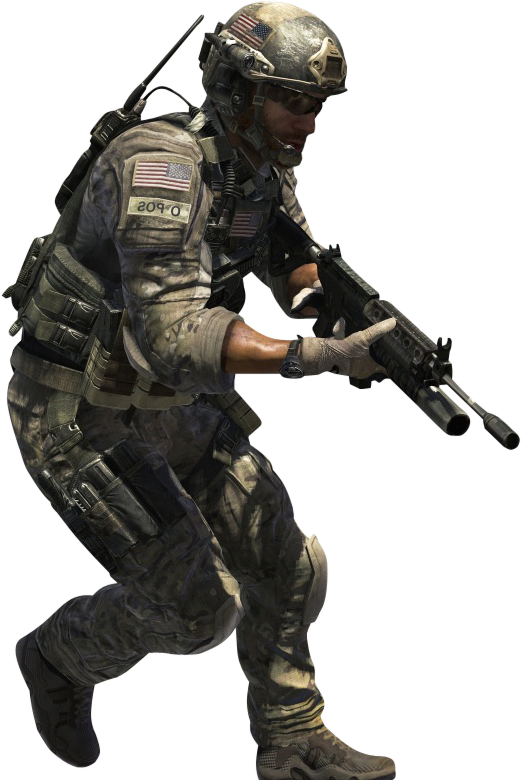
Traveler (Replaces Sailor)
Travelers spend years moving from location to location either by land, sea, or air. Long-haul truckers, sailors, and pilots are travelers.
-
Ability Score Increase. Your Intelligence or Wisdom score (your choice) increases by 1.
-
Skills Proficiencies. You gain proficiency in Wisdom (Perception) and Wisdom (Survival).
-
Tool Proficiencies. You gain proficiency in one of the following: vehicles (air), vehicles (land), or vehicles (sea).
-
Observant. You have a +5 bonus to your passive Wisdom (Perception) score.
-
Equipment. A set of common clothes. In addition, you have 15 trade points that you can spend purchasing equipment of your choice. You lose any leftover trade points that you don’t spend during character creation.
Urchin
Urchins are destitute and poor. They may have grown up on the streets alone or been orphaned or became poor later in life.
-
Ability Score Increase. Your Strength or Constitution score (your choice) increases by 1.
-
Skill Proficiencies. You gain proficiency in Dexterity (Sleight of Hand) and Wisdom (Survival).
-
Brawler. You are proficient with improvised weapons and your unarmed strike uses a d4 for damage.
-
Equipment. A set of common clothes. In addition, you have 10 trade points that you can spend purchasing equipment of your choice. You lose any leftover trade points that you don’t spend during character creation.

Survivor Character Traits and Features
The unfortunate few who have to survive in the world of the dead are known as survivors. As a survivor, you have the following features.
The Survivor
| Level | Proficiency Bonus | Features |
|---|---|---|
| 1st | +2 | Survivor Archetype |
| 2nd | +2 | Bonus Proficiency |
| 3rd | +2 | Archetype Feature |
| 4th | +2 | Ability Score Improvement |
| 5th | +3 | Extra Attack |
| 6th | +3 | Ability Score Improvement |
| 7th | +3 | Archetype Feature |
| 8th | +3 | Ability Score Improvement |
| 9th | +4 | Indomitable |
| 10th | +4 | Improved Defense |
Hit Points
-
Hit Dice: 1d8 per character level
-
Hit Points 1st Level: 8 + your Constitution modifier
-
Hit Points at Higher Levels: 1d8 (or 5) + your Constitution modifier per character level after 1st
Proficiencies
-
Weapons: Simple weapons
-
Saving Throws: None.
-
Skills: Choose one skill proficiency of your choice.
Equipment
You start with the following equipment, in addition to the equipment granted by your background:
- any simple weapon
- Survivor’s Pack. Includes a backpack, a bedroll, a mess kit, a butane lighter, a flashlight, 10 days of rations, a canteen, and a knife.
Survivor Archetype
At 1st level, you choose an archetype that you strive to emulate: Expert, Fighter, or Leader. All three are detailed at the end of the class description. Your choice grants you features at 1st level and again at 3rd and 7th level.
Bonus Proficiency
At 2nd level, you gain proficiency in a saving throw of your choice.
Ability Score Improvement
When you reach 4th level, and again at 6th and 8th level, you can increase one ability score of your choice by 1. You can’t increase an ability score above 16 using this feature. And you may not select a feat in place of an ability score improvement.
Extra Attack
Beginning at 5th level, you can attack twice, instead of once, whenever you take the Attack action on your turn.
Indomitable
Starting at 9th level, you can reroll a saving throw that fails, but you must use the new roll. When you use this feature, you can’t use it again until you finish a long rest.
Improved Defense
At 10th level, your Armor Class increases by 1.
Survivor Archetypes
While all survivors strive towards the common goal of prolonging their existence, not all survivors use the same methods to do so. The ideal of the survivor has three classic expressions: Expert, Fighter, and Leader.
Expert
You are a master of certain tasks and knowledge.
-
Bonus Proficiencies. Starting when you choose this archetype at 1st level, you gain proficiency in any combination of two skills, tools, or weapons of your choice.
-
Expertise. At 1st level, choose one of your skill or tool proficiencies. Your proficiency bonus is doubled for any ability check you make that uses that skill. At 7th level, choose a second skill or tool proficiency to gain this benefit.
-
Helpful. At 1st level, you are adept at giving well-timed assistance. On each of your turns, you can take the Help action as a bonus action.
-
Jack of Many Trades. Starting at 3rd level, you can add half your proficiency bonus to any ability check you make that uses a skill that doesn’t already include your proficiency bonus
-
Resilience. At 7th level, you gain proficiency in a saving throw of your choice.
Fighter
As you survive, your martial prowess grows.
-
Bonus Proficiencies. Starting when you choose this survivor archetype at 1st level, you gain proficiency with martial weapons.
-
Second Wind. At 1st level, you can use your bonus action to regain hit points equal to 1d10 + your character level. Once you use this feature, you can’t do so again until you complete a short or long rest.
-
Improved Critical. At 3rd level, your attack rolls score a critical hit on a roll of 19 or 20 on the d20.
-
Combat Readiness. Starting at 7th level, you have advantage on initiative rolls.
Leader
You inspire others to follow you.
- Bonus Proficiencies. When you choose this survivor archetype at 1st level, you gain proficiency in Wisdom (Insight) and Charisma (Persuasion).
In addition, you have proficiency with Charisma saving throws. If you already have this proficiency, you instead gain proficiency in Intelligence or Wisdom saving throws (your choice).
-
Inspire. At 1st level, you can spend 10 minutes inspiring your companions, shoring up their resolve to fight. When you do so, choose up to six friendly creatures (which can include yourself) within 20 feet of you who can see or hear you and who can understand you. Each creature can gain temporary hit points equal to your level + your Charisma modifier (minimum of 1). A creature can’t gain temporary hit points from this feature again until it has finished a short or long rest.
-
Diplomacy. Starting at 3rd level, if you spend 1 minute talking to someone who can understand what you say, you can make a Charisma (Persuasion) check contested by the creature’s Wisdom (Insight) check. If you or your companions are fighting the creature, your check automatically fails. If your check succeeds, the target is charmed by you as long as it remains within 60 feet of you and for 1 minute thereafter.
-
Empathy. At 7th level, you can use your action to try to get uncanny insight about one humanoid you can see within 30 feet of you. Make a Wisdom (Insight) check contested by the target’s Charisma (Deception) check. If your check succeeds, you have advantage on attack rolls and ability checks against the target until the end of your next turn.
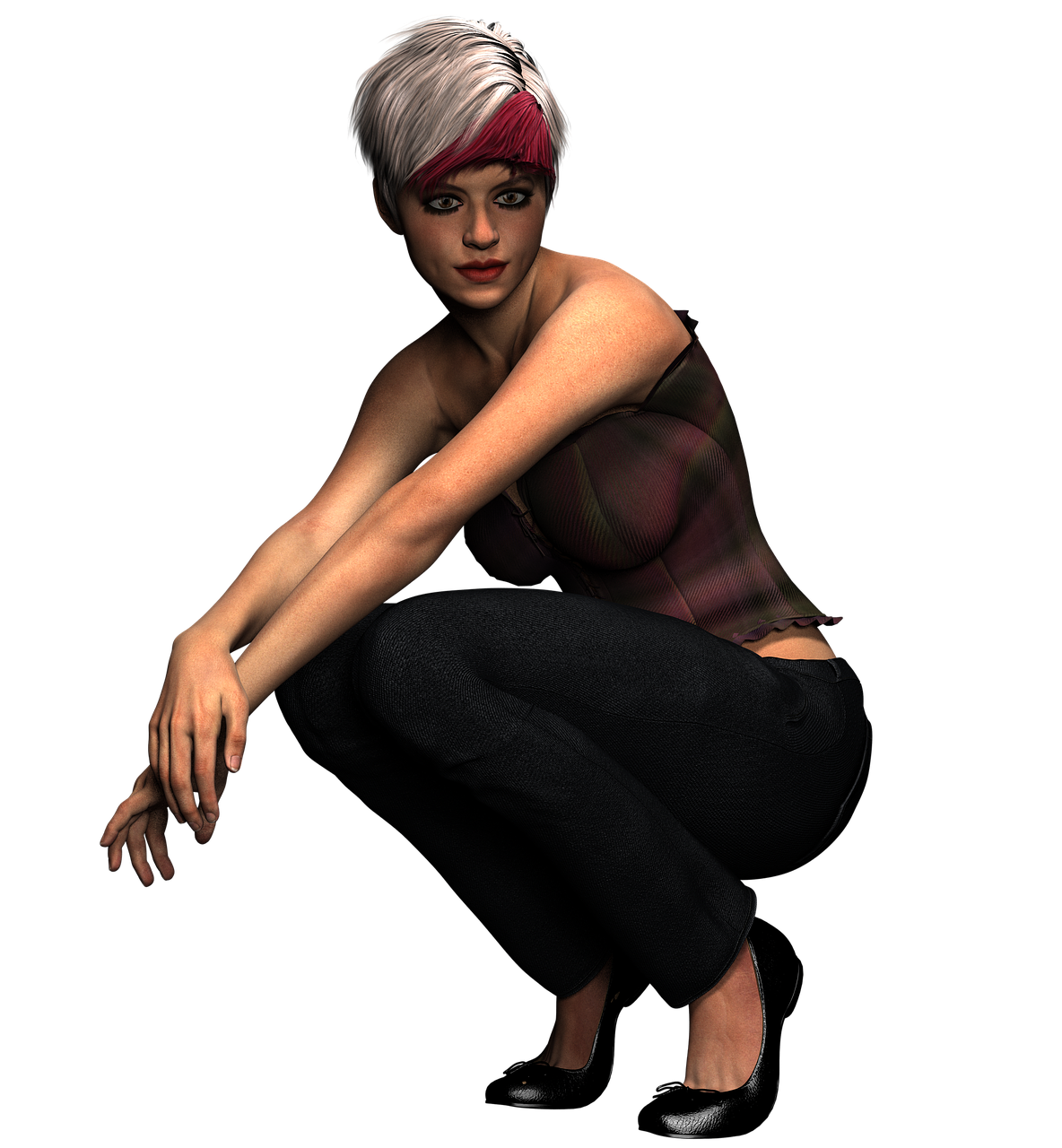
PART 3
Surving In A World Of The Dead


ZACS 5e is a survival horror game set in a zombie apocalypse. Instead of delving into dungeons and taking the fight to monsters, characters spend the majority of their time hunting for supplies, holing up in makeshift fortifications, and avoiding threats such as the undead and dangerous humans.
Base of Operations
Typically, a party of survivors (or “band”, if you will) makes their home in a location that is easy-to-defend from the living dead and other dangers. These bases of operation may not always be homes. Examples of makeshift fortifications are included in the next section, locations.
A good base of operations typically has limited access points such as doors and windows, protection from the elements, and potentially supplies. Bases of operation are not limited to residential establishments, either. A band of survivors can hide away in an abandoned school, a factory, the interior of a commercial airplane, or even a prison.
Fortifying a Location
The typical exterior door is made of heavy-gauge galvanized steel over a core of rigid foam. For residential establishments, the doors’ surfaces are typically coated with a polymer or vinyl and are wood-grain embossed. These doors have an AC of 19 with 25hp. Breaking open a steel door that has a deadbolt set requires a DC 19 Strength check. Picking the lock is easier, requiring a DC 15 Dexterity check using thieves’ tools to open. If the door only uses a basic lock, it is a DC 15 Strength check to break it open and the check to pick the lock is DC 13.
Interior doors are much weaker. Hollow core doors have an AC of 12 and only 10 hp. Solid wood doors have an AC of 15 and 15 hp. Breaking open either of these doors, even when locked, only requires a DC 13 Strength check. Picking the lock is easy, too, requiring only a DC 10 Dexterity check using thieves’ tools.
Windows have an AC of 13 regardless of size. Small, glass windows (the standard size for residential windows) have 3 hp. Breaking a window requires a DC 13 Strength check. Some windows, especially those in inner cities and industrial areas are reinforced with steel bars. Steel bars have an AC of 19 and 30 hp. A Strength check of 25 is required to bend steel bars.
Characters can spend up to 8 hours each day fortifying a location by boarding up its windows and doors. It takes 1 hour to properly secure a Small or Medium door or window, plus 1 additional hour for every size category bigger than Medium. The character must have the proper resources in order to fortify the door or window such as lumber, nails, etc. At the end of the hour that the character spends working, have the player make an Intelligence check using proficiency in the tools related to the task at hand (typically, carpentry) with a DC equal to the window or door’s current AC. On a successful check, the door or window’s AC becomes 15, unless it is already higher, and it gains 5 hp. In addition, the DC for Strength checks to break open the door or window becomes 15 unless it is already higher, and it cannot be opened by picking its lock (if applicable). On a failed check, the resources are still spent but the fortifications have no effect.
Encounters
Even the most well-defended base of operations can find itself in trouble. Roll a d20 three times per day of game time, checking for encounters each morning, afternoon, and evening or night. An encounter occurs on a roll of 18 or higher. Roll another d20 and check the Encounters table for the terrain appropriate to where the characters and their base are. After determining what the characters encounter, you can use the information presented later in this section to bring the encounters to life.
Scavenging and Travel
Of course, it’s not always possible to simply hole up in a location and live there. Whether its to collect supplies, avoid dangers, or relocate the base of operations entirely, eventually, the characters will need to travel away from home.
Encounters while Traveling
While the characters are scavenging, traveling, or camping in the wilderness, roll a d20 three times per day of game time, checking for encounters each morning, afternoon, and evening or night. An encounter occurs on a roll of 16 or higher. Roll another d20 and check the Encounters table for the terrain appropriate to where the characters and their base are. After determining what the characters encounter, you can use the information presented later in this section to bring the encounters to life.
If your players tire of random encounters, make such encounters less common by having them occurs on a roll of 18 or higher, or only 20. You can also let the players narrate their way through avoiding easy encounters, or you can increase the difficulty of easy encounters to keep them exciting. One way to make an encounter more challenging is to have it trigger a second random encounter. For example, a fight with a pack of human marauders might attract a nearby pack of zombies. You can also shorten encounters by having creatures flee when they lose tactical advantage or most of their hit points.
Of course, the dead never flee.
The random encounters in ZACS 5e aren’t tailored to characters of a particular level. If the characters encounter hostile creatures beyond their ability to defeat, give them opportunities to run, hide, negotiate, or otherwise avoid certain death. You can also have other creatures arrive and provide a distraction that the characters can use to make their escape.
Encounters
| Encounter | Coast | Rural | Suburb | Urban | Mount. | Rivers | Forest |
|---|---|---|---|---|---|---|---|
| Bandits | 1 | 1 | 1 | 1 | 1 | 1 | 1 |
| Cache | 2 | 2 | 2-3 | 2-4 | 2 | 2 | 2 |
| Wild Animals | 3 | 3-5 | 4 | – | 3-11 | 3-5 | 3-11 |
| Soldiers | 4-5 | 6 | 5 | 5 | 12 | 6 | 12 |
| Survivor, Dead | 6 | 7 | 6 | 6 | 13 | 7 | 13 |
| Survivors | 7-9 | 8-10 | 7-8 | 7 | 14 | 8-9 | 14 |
| Zombie Herd | – | 11-13 | 9-11 | 8-12 | – | 10 | 15 |
| Zombies | 10-20 | 14-20 | 12-20 | 13-20 | 15-20 | 11-20 | 16-20 |

Bandits. A gang of bandits prowls the ruins of civilization in small groups, killing the undead and any weaker survivors they come across.
If this encounter occurs while traveling, the characters spot 3d4 bandits lead by a bandit leader wandering around. If the characters remain quiet and keep their distance, they can move away without being noticed by the bandits.
If this encounter occurs at the base of operations, 3d4 bandits lead by a bandit leader try to sneak into the characters’ camp and murder them. Any character on guard is warned of the attack with a successful DC 10 Wisdom (Perception) check.
Cache. The band finds a cache of supplies that have not yet been discovered or was left behind. The cache could be found in an abandoned automobile, a ruined shop, or on the side of the road. Roll a d20 and consult the Caches table to determine what the characters find.

| d20 | Cache |
|---|---|
| 1 | A survivor’s pack |
| 2 | 10-day supply of preserved rations |
| 3 | 20-day supply of preserved rations |
| 4 | 30-day supply of preserved rations |
| 5 | 1d4 casks of water holding 5 gallons each |
| 6 | 1d4 cases of liquor holding 12 500 ml bottles each |
| 7 | 1d4 cans of gasoline holding 1 gallon each |
| 8 | Medicine kit |
| 9 | 15 bullets for an automatic pistol |
| 10 | An automatic pistol with a full clip (15 bullets) |
| 11 | A box containing 2d4 flares |
| 12 | 2 flashlights |
| 13 | Two-person tent and 1d4 survivor’s packs |
| 14 | A shotgun with 5 shells |
| 15 | Set of carpenter’s tools |
| 16 | 1d10 changes of clean clothing |
| 17 | A map of the region |
| 18 | Two-person tent and 1d4 medicine kits |
| 19 | 2 two-person tents, folding camp table, and four folding stools |
| 20 | 2d4 medicine kits |
Wild Animals. Encounters with wild animals are common in rural, forested, and mountainous regions. Roll a d6 to determine the animal’s situation:
1-2. The animals are hungry and scavenging.
3-4. The animals are in good shape but are actively hunted by another group of survivors or bandits.
- The animals are in good shape but are surrounded by 3d4 zombies.
- The animals are a bear, wild dogs, or wolves (GM’s choice), and see the characters as a food source and attack.
Soldiers. Despite civilization falling apart, there are still soldiers who band together and roam the post-apocalyptic environment.
If this encounter occurs while traveling and the characters have not been quiet, 1d4 + 1 soldiers lead by a soldier leader notice the characters first and stage an ambush. Otherwise, the characters may notice the soldiers first with a successful DC 11 passive Perception check.
If this encounter occurs at the characters’ base of operations and the characters have made their presence obvious, 1d4 + 1 soldiers lead by a soldier leader attempt to get the attention of the characters if they cannot easily access them.
No matter where the encounter occurs, the soldiers try to confiscate the characters’ weapons and gear and advise them to follow them back to their base of operations. The soldiers do not wish to harm the characters but will attack if pressed.
Survivor, Dead. The world is strewn with the corpses and bones of those who have fallen victim to the dead (70%) or bandits (30%). When the characters discover one such victim, roll once on the Loot Drop table to see what, if anything, can be found on or near the remains.

two grenades
| d100 | Loot Drops |
|---|---|
| 01-50 | None |
| 51-52 | A crude map of the surrounding area, showing a base of operations with a secret supply cache |
| 53-54 | A wallet stuffed with twenty $100 bills |
| 55-56 | A wedding ring with a large diamond |
| 57-58 | 3 candy bars which count as 1 day’s worth of rations |
| 59-60 | A clip to an automatic pistol with 1d10 bullets |
| 61-62 | An expensive looking watch |
| 63-64 | A flask filled with high-proof rum |
| 65-66 | A carton of cigarettes |
| 67-68 | A bag filled with 1d8 medicine kits |
| 69-70 | A silver locket with a picture of a family inside |
| 71-72 | A bottle of whiskey |
| 73-74 | A bottle of wine |
| 75-76 | An automatic pistol with no bullets |
| 77-78 | A hunting rifle |
| 79-80 | A hunting knife |
| 81-82 | A bag filled with soup cans (10 days worth of rations) |
| 83-84 | A spilled shopping cart filled with food preserves (20 days worth of rations) |
| 85-86 | A full suit of riot gear |
| 87-88 | Binoculars |
| 89-90 | A guitar with one broken string |
| 91-92 | A crossbow with 3 bolts |
| 93-94 | A survivor’s pack with a torn open backpack |
| 95-96 | A bulletproof vest |
| 97-98 | An automatic rifle with 3d10 bullets |
| 99-00 | 2 grenades |
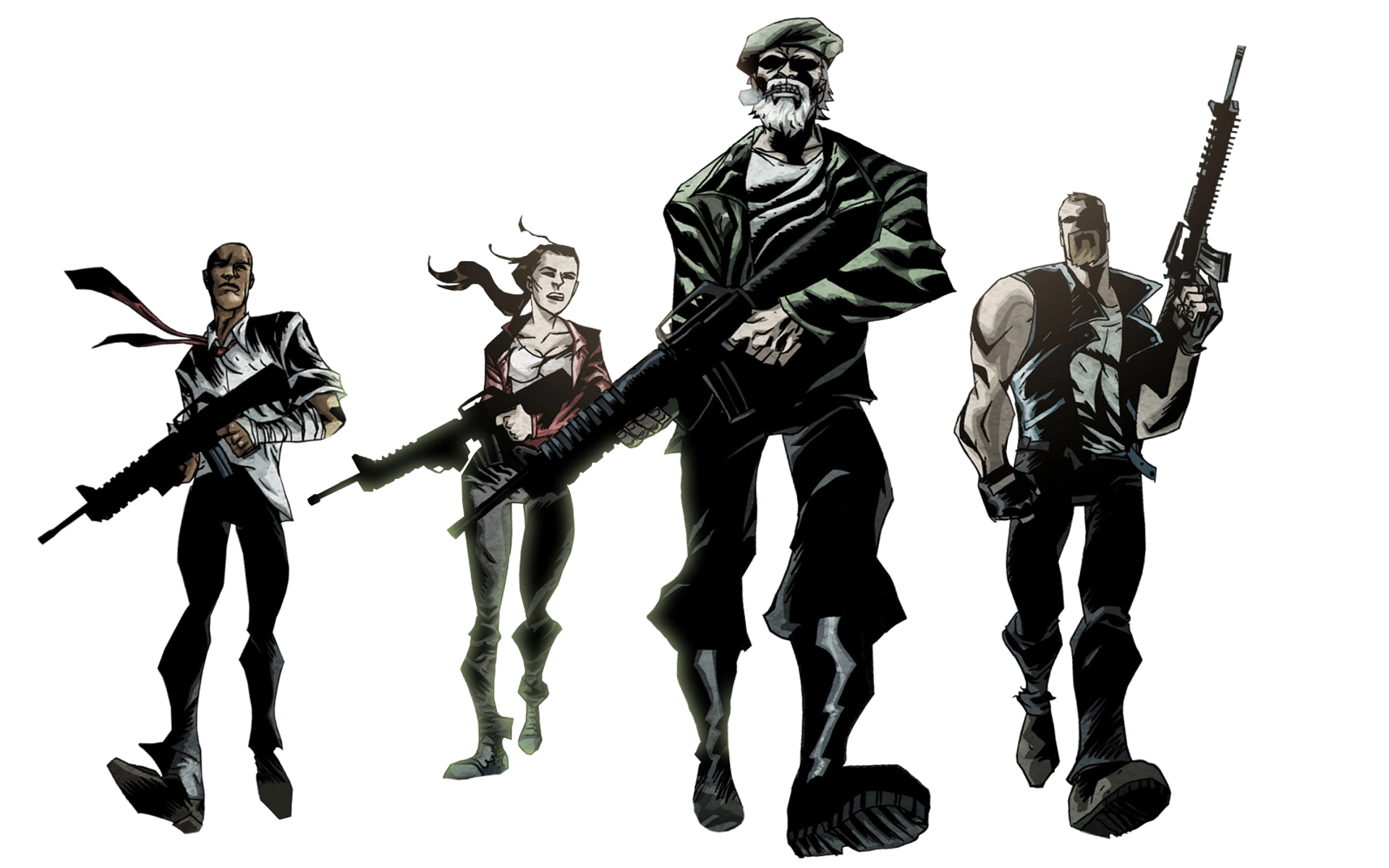
Survivors. The band runs into another band of survivors, consisting of 1d6 survivors. Roll a d6 to determine the group’s situation.
1-2. The survivors are lost, hungry, and desperate. There is a 25% chance that one is injured or bitten.
3-4. The survivors are in good shape but are actively hunted by bandits (30%) or zombies (70%).
- The survivors are healthy and are looking for supplies.
- The survivors are headed back to their base of operations.
Zombie Herd. When hundreds–even thousands of zombies–cluster together, they create herds. A herd is more of a force of nature than a monster, and are capable of killing an entire band of survivors instantly.
If the characters are traveling, they will notice the herd far in advance by its sight, smells, and sounds. The traveling characters will have to travel around the herd or wait for it to pass if they wish to continue forward. Each hour that the characters wait, roll a 1d8. On a roll of 1, the herd leaves the area.
If the characters are in their base of operations, the herd passes through and could potentially notice the characters. Have the characters make a group DC 14 Dexterity (Stealth) check. If the group succeeds, the characters must wait it out or try to escape. Otherwise, the zombies notice and attack (see below).
Each hour that the characters wait, roll a 1d8. On a roll of 1, the herd leaves the area. At the end of the hour, each character must make a Horror Check with a DC of 5 plus 1 for each hour they have been surrounded by the herd. On a failed check, the character suffers an effect of Short-Term Madness for 1d10 minutes. Roll a result on page 259 of the Dungeon Master’s Guide.
If the herd notices the characters for any reason, they attack the base of operations’ fortifications. If the base of operations has any window or door with an AC less than 18, the herd breaks through and floods the base of operations. Consider the entire base of operations plus an additional 1d4 x 100 feet surrounding the location filled with hundreds of zombies.
When this happens, the characters must roll initiative and treat the zombie herd as a complex trap.
- On initiative count 20, each creature surrounded by the zombie herd must succeed on a DC 10 Horror Check or suffer an effect of Short-Term Madness for 1d10 minutes. Roll a result on page 259 of the Dungeon Master’s Guide.
- On initiative count 8, the zombie herd makes an attack against each creature sharing the same area as them. Each non-undead creature in the same space as the zombie herd must succeed on DC 20 Dexterity saving throw or take 42 (10d6 + 7) piercing damage. The zombies count as difficult terrain.
- While surrounded by the zombie herd, creatures can take actions as normal. However, some of the actions work differently when taken against a zombie herd:
-
Attack. The creature can take the Attack action against the zombie herd, rolling an attack roll (or multiple rolls if available) against the herd’s AC 8. If the creature lands a successful hit, the attack doesn’t deal damage. Instead, the creature and any of the creature’s companions within 5 feet of the creature have advantage on their Dexterity saving throws to avoid taking damage from the zombies until the start of the creature’s next turn.
-
Dodge. The creature can take the Dodge action. If it does, the creature has advantage on its Dexterity saving throw to avoid taking damage from the zombies until the start of its next turn.
-
Hide. The creature can make a DC 14 Dexterity (Stealth) check. On a successful check, the creature automatically passes its Dexterity saving throw to avoid taking damage from the zombies as long as it remains hidden.

Zombies. One or more zombies stumble onto the survivors or vice versa. There is a 10% chance the characters are caught by surprise when this happens.
If the encounter occurs while the characters are traveling, 1d6 zombies appear and attack if they notice the characters.
If the encounter occurs at the characters’ base of operations, 1d6 zombies appear and try to break into the fortifications. Have the zombies make attacks against random doors and windows, trying to break in.
Equipment
Naturally, a lot of the equipment offered in the Player’s Handbook is irrelevant in ZACS 5e. ZACS 5e uses primarily modern weapons and equipment.
Trade Value
Instead of having a cost in gold like in Fifth Edition, equipment and loot have trade values which are negotiable. Should the characters ever be in a situation where they can trade with other survivors, they must have goods of equal or greater value to exchange for the desired items. The value of items depends on the one doing the trading. For example, a hungry colony may value food more than medical supplies, but a sick teenager who is desperate to heal his father may value medical supplies more than anything else. Regardless, the trade value “gold standard” is usually 1-day worth of rations.
Armor
Armor is not very common in ZACS 5e but still exists. Listed below are three common types of armor that you might find.
Leather Jacket. Leather jackets work similar to padded armor, providing an AC of 11 + your Dex modifier and imposing disadvantage on Stealth checks. It weighs 9 lb.
Tactical Vest, Light. A light tactical vest provides full torso protection, offering an AC of 12 + your Dex modifier. The vest weighs 6 lb.
Riot Gear. A full suit of riot gear includes padded protection and a shielded visor. The armor offers an AC of 14 + your Dex modifier (max 2) and weighs 16 lbs.
Tactical Armor, Heavy. These military grade tactical vests come with ballistic plate inserts, and collar and groin protectors. They offer an AC of 18. Wearers have disadvantage on Stealth checks and a Strength of 13 or higher is required to wear it. This gear weighs 35 lbs.
Weapons
Many of the weapons in ZACS 5e function the same way as their Fifth Edition counterparts. Naturally, many of the medieval weapons in the Player’s Handbook won’t be readily available in the modern setting. The following weapons from the PHB are easy to find. Any weapons that are not listed are considered “rare”:
Clubs. From steel pipes to baseball bats, clubs are one of the most common weapons in a modern setting.
Knives. Functionally, knives are the same as daggers.
Handaxes. Hatchets, fire axes, and the like are also common in ZACS 5e.
Machetes. For all intents and purposes, treat machetes and other large slashing weapons as scimitars.
Crossbow, light. Light crossbows exist in ZACS 5e, however, they are considered martial ranged weapons instead of simple weapons.
Shortbow. Similar to light crossbows, shortbows are martial ranged weapons.
Longsword. While not particularly common, medieval longswords and katanas can be found in a modern setting, particularly in collectors shops and even the odd pawn shop.
Firearms
In addition to the melee and ranged weapons found in the Player’s Handbook, ZACs 5e uses the modern firearms list from the Dungeon Master’s Guide (page 268).

Survival Gear
The following items are those commonly found and used by survivors in ZACS 5e. Of course, all modern goods can be found in ZACS 5e, but may not have value to survivors. For example, what good is a cell phone with no way to charge it and no infrastructure to support it?
| Item | Weight |
|---|---|
| Backpack | 3 lb. |
| Binoculars | 2 lb. |
| Blanket | 2 lb. |
| Bolt cutter | 5 lb. |
| Book | 1 lb. |
| Car opening kit | 1 lb. |
| Chain (10 feet) | 10 lb. |
| Climbing gear | 10 lb. |
| Clothes, common | 3 lb. |
| Clothes, fine | 6 lb. |
| Clothes, traveler’s | 4 lb. |
| Clothes, uniform | 4 lb. |
| Coat, heavy | 3 lb. |
| Coat, light | 2 lb. |
| Compass | 0.5 lb. |
| Crowbar | 5 lb. |
| Duct tape | 1 lb. |
| Fire extinguisher | 3 lb. |
| Fishing pole | 4 lb. |
| Flares (5) | 1 lb. |
| Flashlight | 1 lb. |
| Gas mask | 5 lb. |
| Item | Weight |
|---|---|
| Gasoline (1 gal) | 5 lb. |
| Handcuffs, steel | 1 lb. |
| Handcuffs, zip-tie | (25) 0.5 lb. |
| Holster, concealed | 0.5 lb. |
| Holster, hip | 1 lb. |
| Instrument, stringed | 7 lb. |
| Lantern, hooded | 2 lb. |
| Medical kit | 3 lb. |
| Multipurpose tool | 0.5 lb. |
| Portable stove | 1 lb. |
| Rations (1 day) | 2 lb. |
| Road atlas | 1 lb. |
| Rope (150 ft.) | 12 lb. |
| Scope | 0.5 lb. |
| Sleeping bag | 4 lb. |
| Tent, 2-person | 4 lb. |
| Tent, 4-person | 7 lb. |
| Tent, 8-person | 10 lb. |
| Walkie-Talkie | 1 lb. |
Tools
In addition to the Player’s Handbook tools normally offered to characters, there are also toolsets for modern jobs such as auto mechanics, electrician’s, and plumbers tools. Most weigh 6 lb or more.


Vehicles
Many vehicles are available to characters in a modern setting. These are the most common vehicles found in ZACS 5e.
| Item | Speed | Crew | Pass. | Cargo | AC | HP | Dmg. Thres |
|---|---|---|---|---|---|---|---|
| Armored Truck | 45 mph | 2 | 0 | 3600 lb. | 19 | 200 | 20 |
| Boat, cabin cruiser | 20 mph | 1 | 3 | 2000 lb. | 15 | 50 | 10 |
| Boat, runabout | 15 mph | 1 | 5 | 2100 lb. | 15 | 50 | 10 |
| City bus | 40 mph | 1 | 39 | 0 lb. | 16 | 100 | 10 |
| Dirt bike | 30 mph | 1 | 1 | 0 lb. | 13 | 20 | 5 |
| Full-size SUV | 45 mph | 1 | 8 | 500 lb. | 16 | 100 | 10 |
| Helicopter, civilian | 80 mph | 1 | 4 | 250 lb. | 15 | 50 | 5 |
| Helicopter, military | 120 mph | 2 | 14 | 9000 lb. | 16 | 200 | 5 |
| Mid-size sedan | 50 mph | 1 | 4 | 300 lb. | 16 | 50 | 5 |
| Mid-size SUV | 50 mph | 1 | 4 | 300 lb. | 16 | 50 | 5 |
| Motorcycle, racing | 150 mph | 1 | 0 | 0 lb. | 13 | 30 | 5 |
| Motorcycle, street | 50 mph | 1 | 1 | 0 lb. | 16 | 45 | 5 |
| Moving Truck | 45 mph | 1 | 2 | 33000 lb. | 16 | 100 | 15 |
| Pickup truck | 50 mph | 1 | 2 | 1700 lb. | 16 | 50 | 5 |
| Prop plane | 80 mph | 1 | 3 | 120 lb. | 15 | 50 | 5 |
| Sea-doo | 25 mph | 1 | 1 | 60 lb. | 13 | 30 | 5 |
| Sports car | 120 mph | 1 | 1 | 250 lb. | 14 | 50 | 5 |
| Tank, tracked | 20 mph | 4 | 0 | 425 lb. | 19 | 300 | 20 |
PART 4
Special Locations and Side Quests
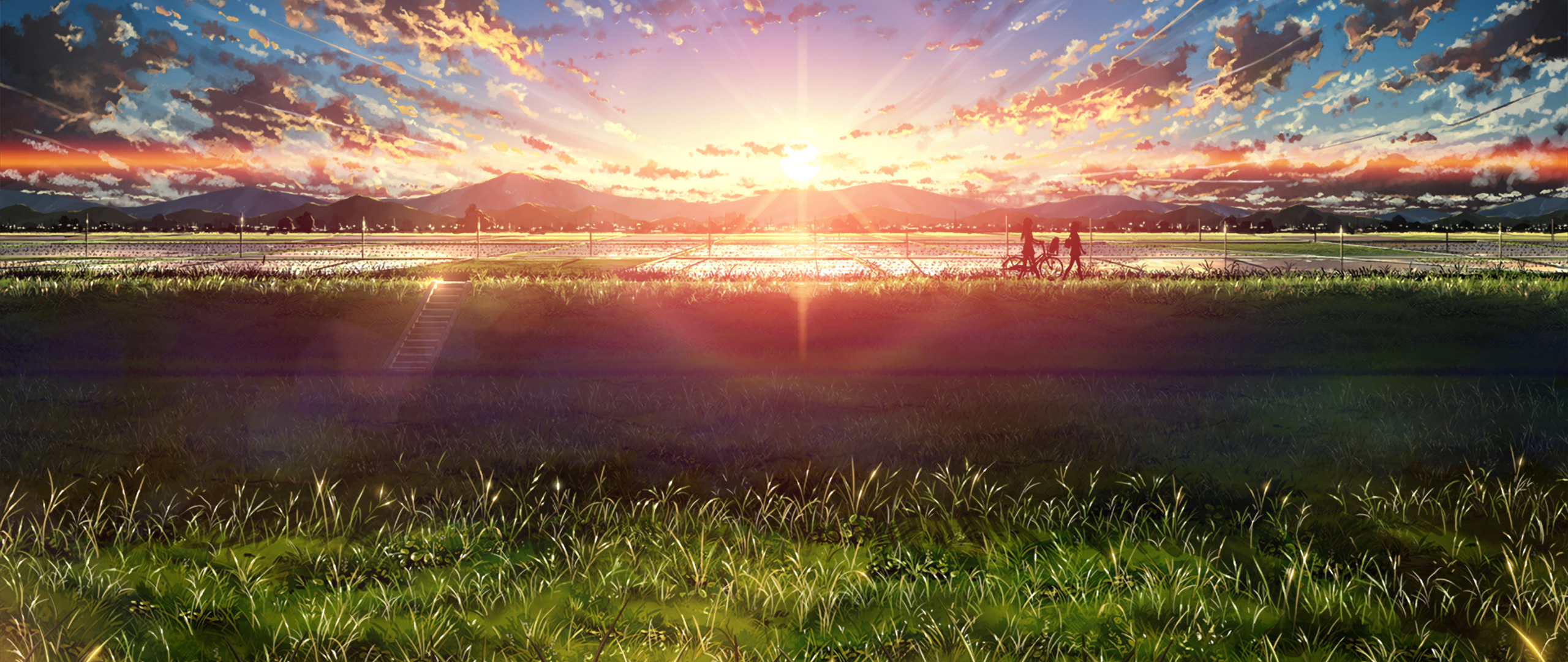

Sometimes, characters may set out to check out specific areas of interest. An area of interest could be a grocery store overrun with the dead but still filled with rations. Or it could be a military base that’s potentially loaded with weapons. The location may even be the base of operations for a rival band of survivors.
You can create side quests centered around these special locations to break up the monotony of the typical random encounter or scavenging mission.
One of the characters could have a sick child who desperately needs medicine only found at a local hospital.
The characters’ only way of travel may be a narrow bridge over a river that’s jammed with abandoned vehicles.
It’s possible that the survivors may even find themselves locked in a jail cell by an insane former police officer and now the dead are drawing near.
Use any of the following maps as locations for your ZACS 5e campaign:






Many of these locations come from the d20 Modern Sourcebook, Critical Locations. Other great places to find maps include Shadowrun sourcebooks which also have modern day maps.
PART 5
Challenges
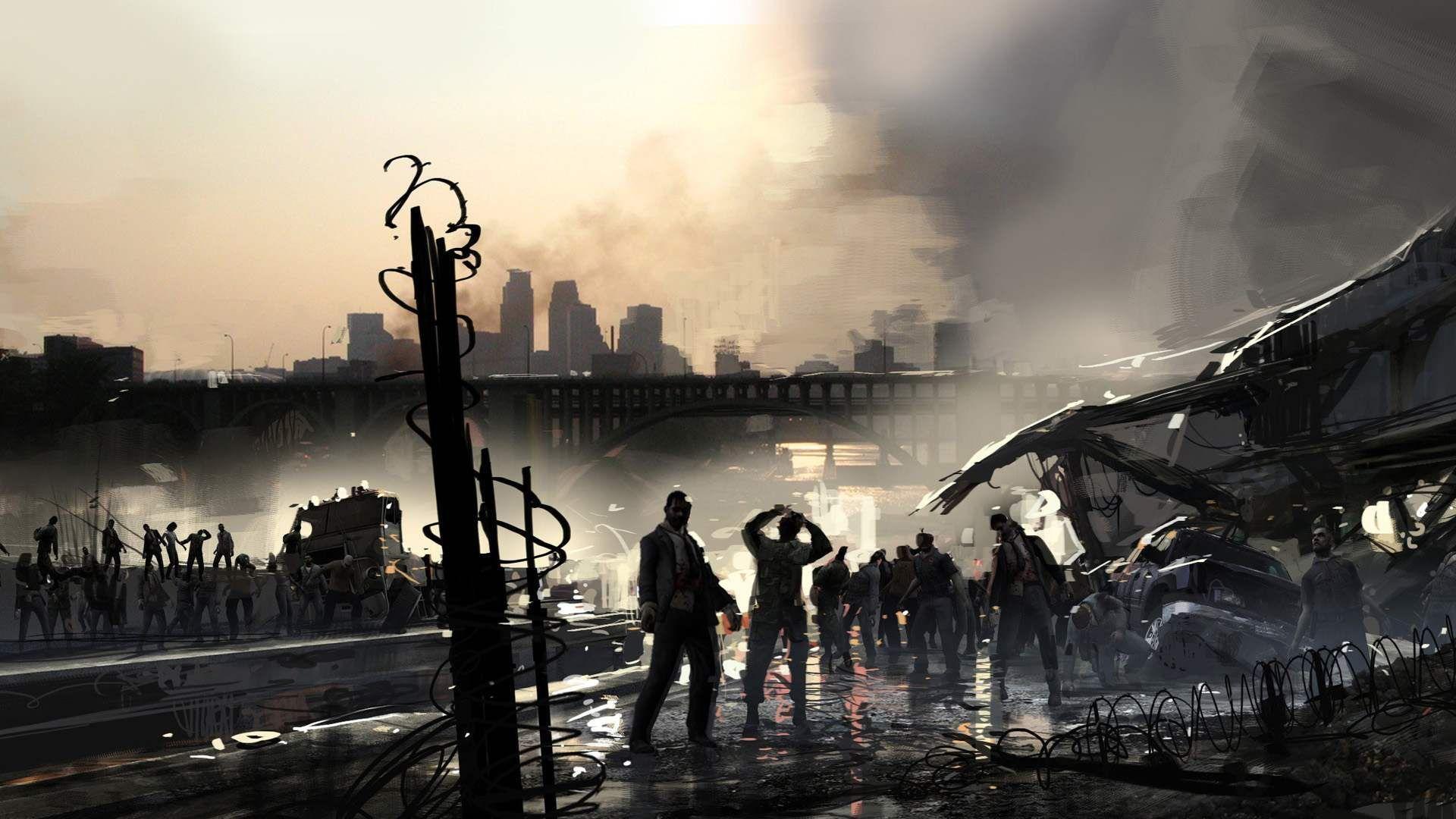

ZACS 5e’s challenges are a little different than those found in the Monster Manual. For example, zombies in “Romero-style” horror don’t usually use slam attacks but rely on grappling and biting to deal damage. Furthermore, any bite from a zombie is usually fatal, as they carry a disease that kills its victims.
Some NPCs are also different. Bandits wear leather jackets and carry pistols and machetes. Soldiers are armed with automatic rifles.
Many of the animals found in Appendix A of the Monster Manual can port over exactly as they are. And survivors are the same as commoners, except they also carry automatic pistols, making their CR 1/8 (25 XP).
Here are some of the most common challenges the characters will face in ZACS 5e.
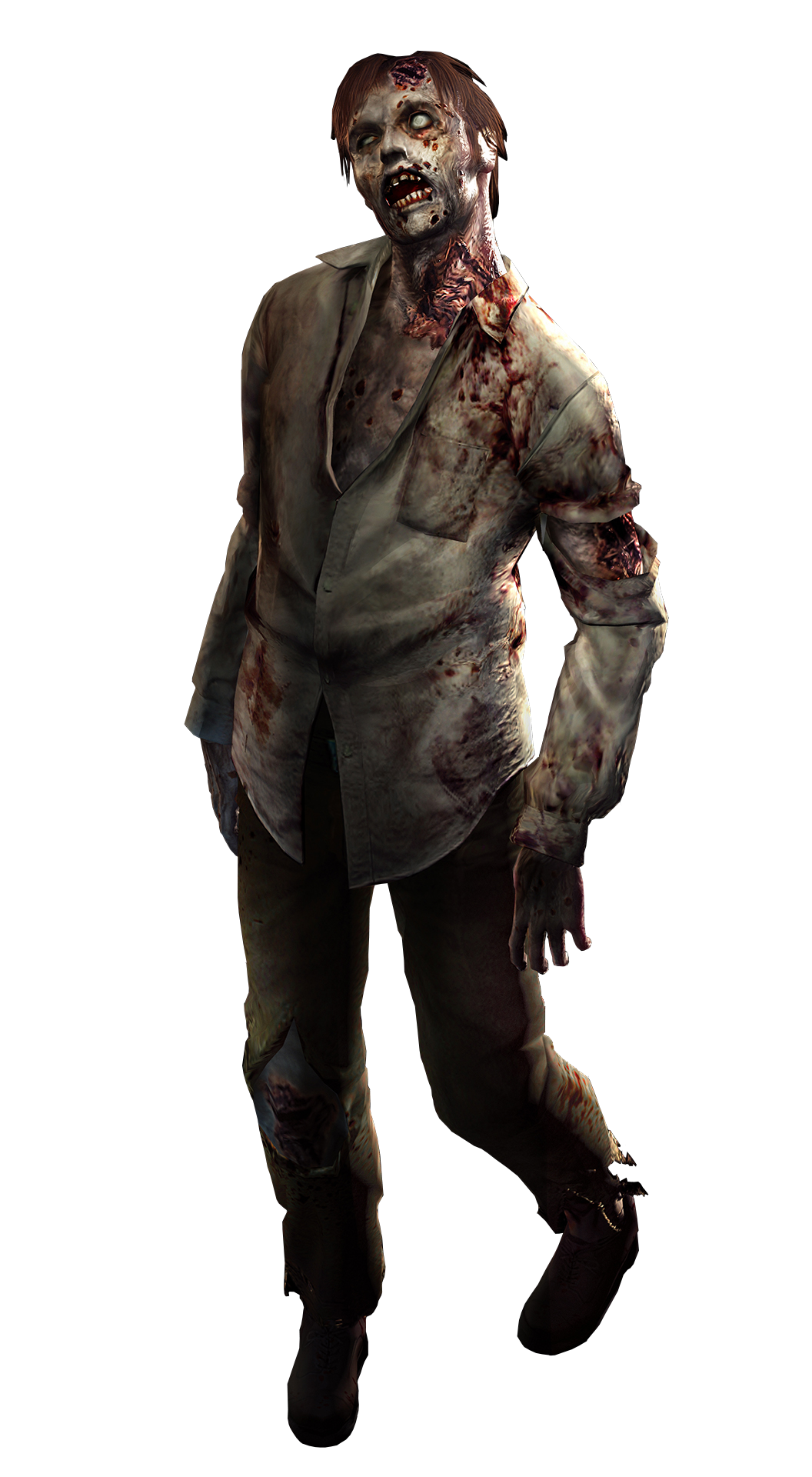
Zombie
Medium undead, neutral
- Armor Class 8
- Hit Points 7 (1d8 + 3)
- Speed 20ft.
STR DEX CON INT WIS CHA 13 (+1) 6 (-2) 16 (+3) 3 (-4) 6 (-2) 5 (-3)
- Saving Throws Wis +0
- Damage Immunities poison
- Condition Immunities charmed, frightened, poisoned
- Senses darkvision 60 ft., passive Perception 8
- Languages -
- Challenge 1/8 (25 XP)
Actions
Slam. Melee Weapon Attack: +3 to hit, reach 5 ft., one target. Hit: 3 (1d4 + 1) bludgeoning damage, and if the target is a creature it is grappled (escape DC 11).
Bite. Melee Weapon Attack: +3 to hit, reach 5 ft., one creature the zombie is grappling. Hit: 3 (1d4 + 1) piercing damage and the target must succeed on a DC 13 Constitution saving throw or contract the zombie rot disease. The diseased target can’t regain hit points, and its hit point maximum decreases by 7 (2d6) for every 24 hours that elapse. If the disease reduces the target’s hit point maximum to 0, the target dies and returns to life as a zombie in 1d4 hours.
Undead Fortitude. Zombies do not require air, food, drink, or sleep. If damage reduces the zombie to 0 hit points, it must make a Constitution saving throw with a DC of 5 + the damage taken, unless the damage is radiant or from a critical hit. On a success, the zombie drops to 1 hit point instead.
Bandit Leader
Medium humanoid (human), any non-lawful
- Armor Class 12 (leather jacket)
- Hit Points 22 (4d8 + 4)
- Speed 30ft.
STR DEX CON INT WIS CHA 14 (+2) 13 (+1) 12 (+1) 11 (+0) 12 (+1) 12 (+1)
- Saving Throws Str +4, Dex +3, Wis +3
- Skills Athletics +4, Deception +3
- Senses passive Perception 11
- Languages any one language (usually English)
- Challenge 1/2 (100 XP)
Actions
Multiattack. The leader makes two melee attacks.
Club. Melee Weapon Attack: +3 to hit, reach 5 ft., one target. Hit: 4 (1d4 + 2) bludgeoning damage.
Shotgun. Ranged Weapon Attack: +3 to hit, range 30/90 ft., one target. Hit: 10 (2d8 + 1) piercing damage.

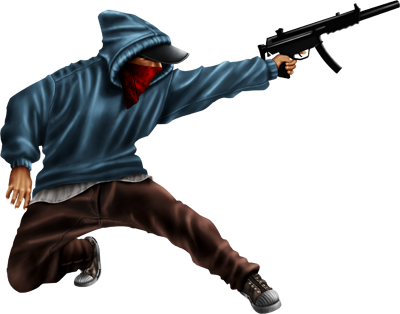
Bandit
Medium humanoid (human), neutral evil
- Armor Class 12 (leather jacket)
- Hit Points 11 (2d8 + 2)
- Speed 30ft.
STR DEX CON INT WIS CHA 11 (+0) 12 (+1) 12 (+1) 10 (+0) 10 (+0) 10 (+1)
- Senses passive Perception 10
- Languages any one language (usually English)
- Challenge 1/4 (50 XP)
Actions
Machete. Melee Weapon Attack: +3 to hit, reach 5 ft., one target. Hit: 4 (1d6 + 1) slashing damage.
Automatic Pistol. Ranged Weapon Attack: +3 to hit, range 50/150 ft., one target. Hit: 8 (2d6 + 1) piercing damage.

Soldier
Medium humanoid (human), any lawful
- Armor Class 14 (tactical vest, light)
- Hit Points 44 (8d8 + 8)
- Speed 30ft.
STR DEX CON INT WIS CHA 13 (+1) 14 (+2) 13 (+1) 10 (+0) 10 (+0) 10 (+0)
- Skills Athletics +3, Survival +2
- Senses passive Perception 10
- Languages any one language (usually English)
- Challenge 2 (450 XP)
Actions
Multiattack. The soldier makes two melee attacks.
Knife. Melee Weapon Attack: +4 to hit, reach 5 ft., one target. Hit: 4 (1d4 + 2) piercing damage.
Automatic Rifle. Ranged Weapon Attack: +4 to hit, range 80/240 ft., one target. Hit: 11 (2d8 + 2) piercing damage.
Burst Fire. The soldier targets a point that it can see within 80 feet of it. Each creature in a 10-foot-cube area centered on that point must succeed on a DC 15 Dexterity saving throw or take 11 (2d8 + 2) piercing damage. This action uses 10 pieces of its automatic rifle’s ammunition.
Soldier Leader
Medium humanoid (human), any lawful
- Armor Class 14 (tactical vest, light)
- Hit Points 66 (12d8 + 12)
- Speed 30ft.
STR DEX CON INT WIS CHA 13 (+1) 14 (+2) 13 (+1) 12 (+1) 13 (+1) 12 (+1)
- Saving Throws Str +3, Dex +4, Con +3
- Skills Athletics +3, Intimidation +2, Survival +3
- Senses passive Perception 11
- Languages any one language (usually English)
- Challenge 3 (700 XP)
Actions
Multiattack. The leader makes two melee attacks or two ranged attacks.
Knife. Melee Weapon Attack: +4 to hit, reach 5 ft., one target. Hit: 4 (1d4 + 2) piercing damage.
Automatic Rifle. Ranged Weapon Attack: +4 to hit, range 80/240 ft., one target. Hit: 11 (2d8 + 2) piercing damage.
Burst Fire. The leader targets a point that it can see within 80 feet of it. Each creature in a 10-foot-cube area centered on that point must succeed on a DC 15 Dexterity saving throw or take 11 (2d8 + 2) piercing damage. This action uses 10 pieces of its automatic rifle’s ammunition.
Leadership (Recharges after a Short or Long Rest). For 1 minute, the leader can utter a special command or warning whenever a nonhostile creature that it can see within 30 feet of it makes an attack roll or a saving throw. The creature can add a d4 to its roll provided it can hear and understand the leader. A creature can benefit from only one Leadership die at a time. This effect ends if the leader is incapacitated.
